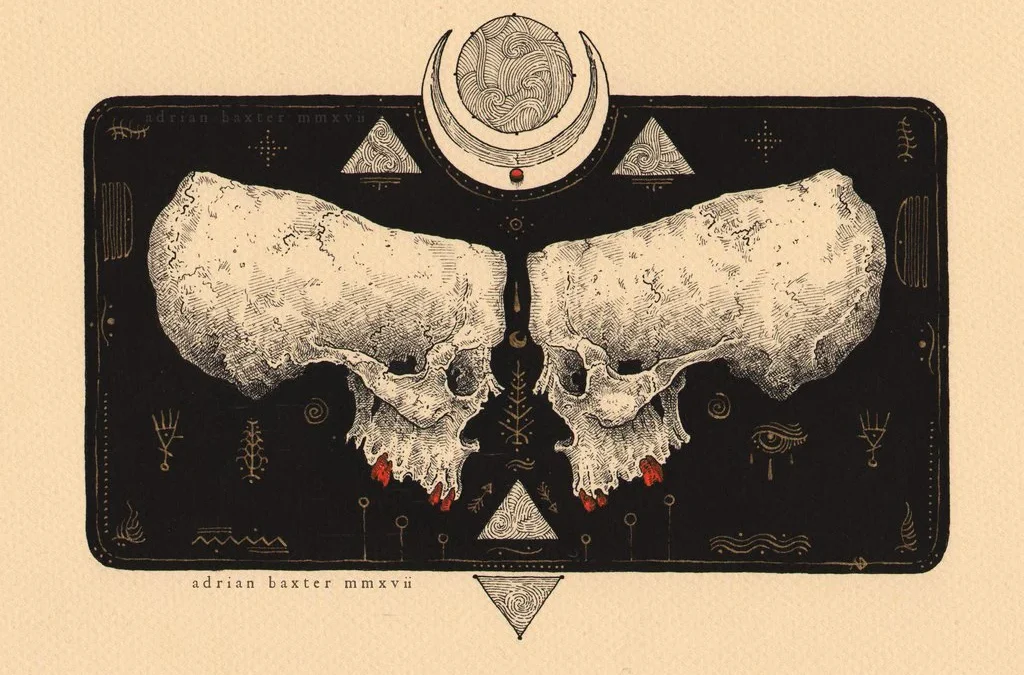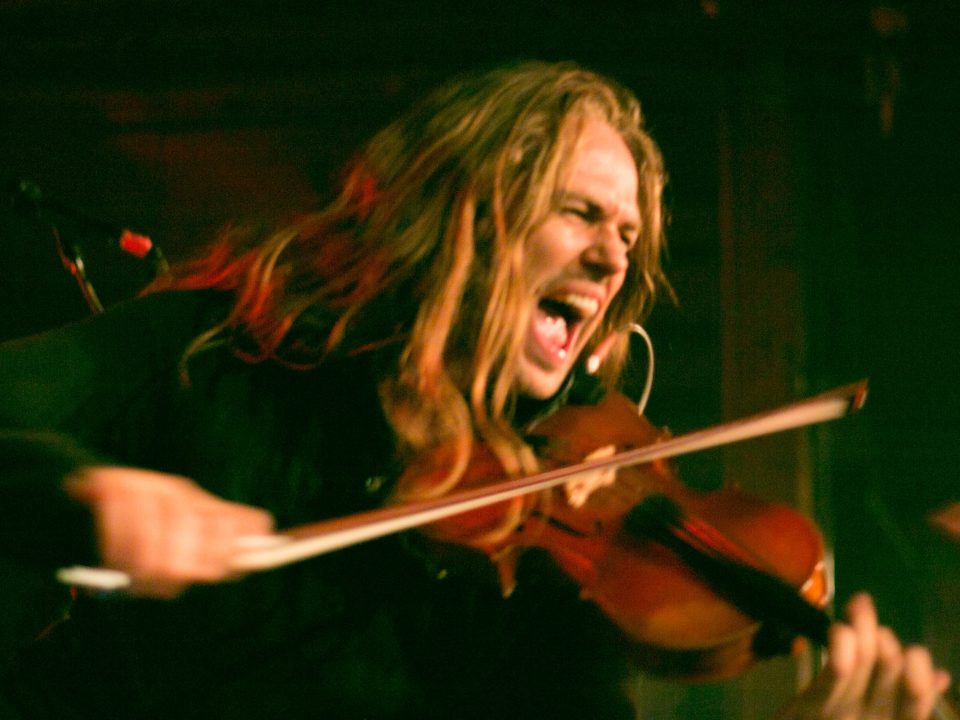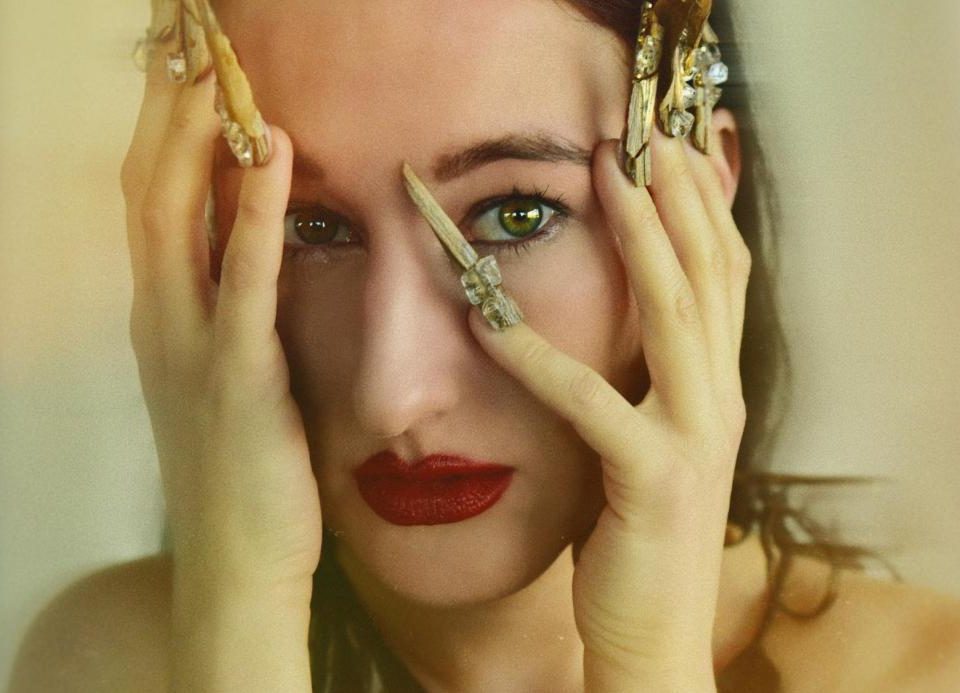
Concert Review: Ne Obliviscaris (2024, IF Besiktas)
11 October 2024
Review: “Porcupine Tree – Fear of a Blank Planet”
1 November 2024Meet Adrian Baxter, resillient illustrator who brings The Halo Effect and Dååth’s album covers to life. His perseverance of inhuman linework marks his signature on many more in metal music industry.

Hello Adrian, thank you for your interest on my request, it’s my honour to host you under Surge’s name as a fellow artist. Let me begin by expressing my adoration to your symmetrical and detailed work, it’s fascinating if we consider you draw your first sketches on paper for a project. Is it just a double-check process before you apply the drawing to digital or you love traditional methods?
Baxter: Hi Irmak, thank you for your interest and kind words. All my work is drawn up in pencil first. I then use a lightpad to ink over those sketches onto a separate sheet of paper. I then scan the final inked work into Photoshop and make any necessary adjustments, as well as adding digital colours.
According to my experience with drawing, your type of artwork should take a lot of time and patience, tell me about the drawing process, you draw the same pattern or motif numerous times like mandalas, is it frustrating?
Baxter: I find drawing repeating patterns quite satisfying. There’s a pleasant feeling to be experienced when everything lines up as planned. I use the lightpad to help arrange patterns and shapes within the pencil work. Some pieces take weeks, some just a few days depending on their size.
I read your statement on A.I., do you think the artists in this industry will survive or only the big names will manage to stay?
Baxter: I do believe artists as we know them will be here to stay, on all levels. Perhaps we’ll even flourish after the A.I. boom has dispersed? I trust in the deep seeded appreciation humans have for genuine human creativity, in all its forms. The current issue with A.I being used in place of artists is its unethical use. It can’t be made without stealing from artists and using their work, used explicitly, ignorantly, and hopefully soon illegally, without permission.
Your artwork known esoteric, regarding that the name “Dååth” belongs to Jewish mysticism, is working for Dååth a perfect match for you?
Baxter: Working with Daath is a perfect match, but not for those reasons in particular. We have very similar thoughts on how my work fits with their music and overall aesthetic, so there’s very little compromise on both sides which is always valuable in this line of work.
Any chance of an exhibition in the future, can we see your physical sketches on a showcase?
Baxter: I have no plans at the moment, but I’d certainly be open to consideration. I did partake in a small number of events some years ago, and those were always fun, if not for the fact I got to meet some peers I’d only ever spoken to online. It’s easy to get stuck in a loop of online-only contact, so it’s important to step out of the cave occasionally.

I had a huge book only about the role of album covers in metal music, years from now, would you think this history will be a major that taught in colleges and universities? Maybe an arts major?
Baxter: It’s certainly possible. If it’s teaching the history of a niche subculture, I’m into it.
Though there’s something to be said about discovering metal music and artwork in the natural, traditional sense. Modern times come with modern changes, so I’d hate to see that disappear.
It’s obvious that you have “loyal clients”, does these bands come to you because both sides are familliar with their expectations on album covers?
Baxter: Some bands like to keep a particular visual language within their own overall aesthetic, others prefer to change it up with each album cycle. When a band and artists styles fit well, it’s always nice to have bands return for another project, though I’ll always understand when they decide to in another direction. It’s important for both sides to develop trust in all aspects of working together, and I believe many bands understand the value in that.
We know that you sketch with graphic pens. Does graphic pens are the medium that you’re the most proficient on or is there any other mediums?
Baxter: I’ve tried many mediums over the years – wa

tercolor, coloured pencil, acrylics, dip pens, but as soon as I discovered pigment liners I instantly knew they were for me. I always had a particular style of linework in my head that I was aiming for, and they showed me what was possible when it comes to building up lines and textures. I chose to use digital colour a few years ago. There wasn’t a colour medium that I ever fell in love with, and digital colouring allows much more experimentation without the risk of wasting days of work on an inked piece with a possibility of a mistake.
Is art education makes a difference in commercial means for illustrators? Do you have an art education background that make customers consider you first?
Baxter: Over the years I’ve known many illustrators both with an art education, and without. Most of those WITH didn’t feel they got much from the education. It’s down to putting in the hours and finding your own voice and style, and also to learn what doesn’t work for you. I don’t have any art education other than some basic college courses many years ago. They gave me access to a number of mediums and styles for a short period of time, but I always came back to pen and ink illustrations. The reason my clients approach me is because I post my work online regularly – it’s basically an online portfolio bands can discover and consider if I’m the right artist for them. They get to see my style and also who I’ve worked with previously.
We reach to the end. Finally, thank you for your consideration. What do you want to accomplish most as an artist?
Baxter: In regards to my personal work I constantly try to ensure whatever I draw is true to myself and my creative needs. If I ever create something for any other reason than that, then I’m failing and something needs addressing.
Irmak Gündüz





1 Comment
Great interview! Baxter rules 🔥